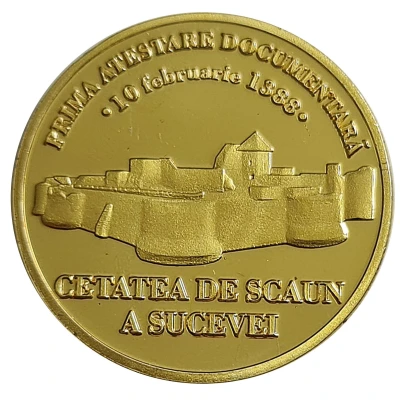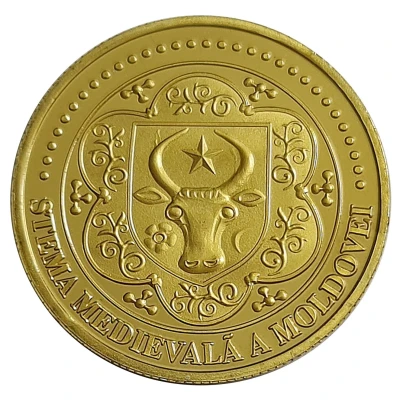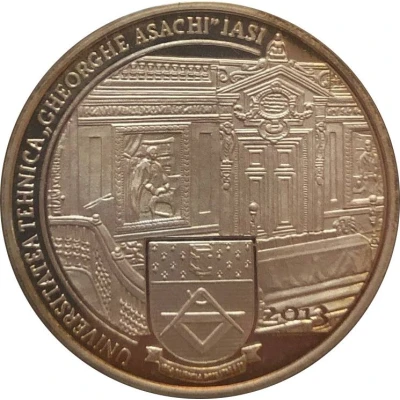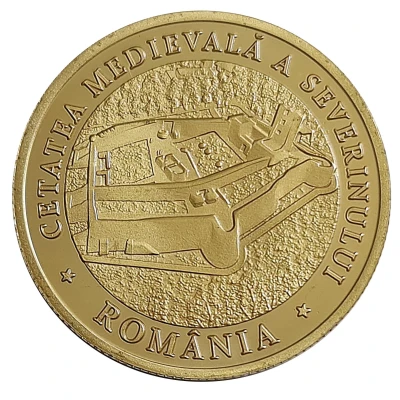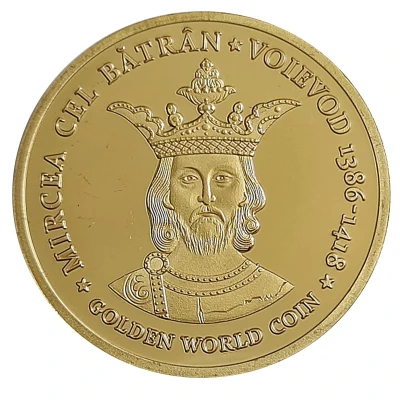Reverse
Script: Latin
Lettering: STEMA MEDIEVALĂ A MOLDOVEI
Comment
Suceava Castle (also known as the throne fortress, Romanian Cetatea de Scaun) - a castle from the late 14th century, extended in the 15th century, destroyed in the 17th century, now in ruins, located in Suceava in northern Romania, Bucovina . The castle on the hill overlooking Suceava was built at the end of the 14th century by the Moldavian hospodar Petru Musat, who moved the duke's seat here. The original building had the shape of a quadrangle (which is still recognizable in the center of the layout), it included residential buildings and a chapel. In the second half of the fifteenth century, the castle was expanded by Stefan the Great, who erected new powerful fortifications, expanding the castle's precincts. The fortress created in this way effectively resisted all invaders during Stefan's lifetime (including twice the Turks, and in 1497 it was unsuccessfully besieged by Poles led by Jan Olbracht), only in 1538 was it handed over by the boyars to the troops of Suleiman the Magnificent. During internal fights in the mid-sixteenth century, the castle was burnt down, and it was rebuilt in the first half of the seventeenth century by The Lord Vasile Lupu. However, soon (in 1653) it was destroyed again during the intervention of the neighbors against Vasile Lupu, as a result of which he was deprived of the throne (Timus Hmelnitki died while defending the castle). Ultimately, the explosion in the fortress in 1675 caused the destruction. Since then, the castle has been in ruins. In the 20th century, the ruin of the castle was partially rebuilt and underwent conservation.
